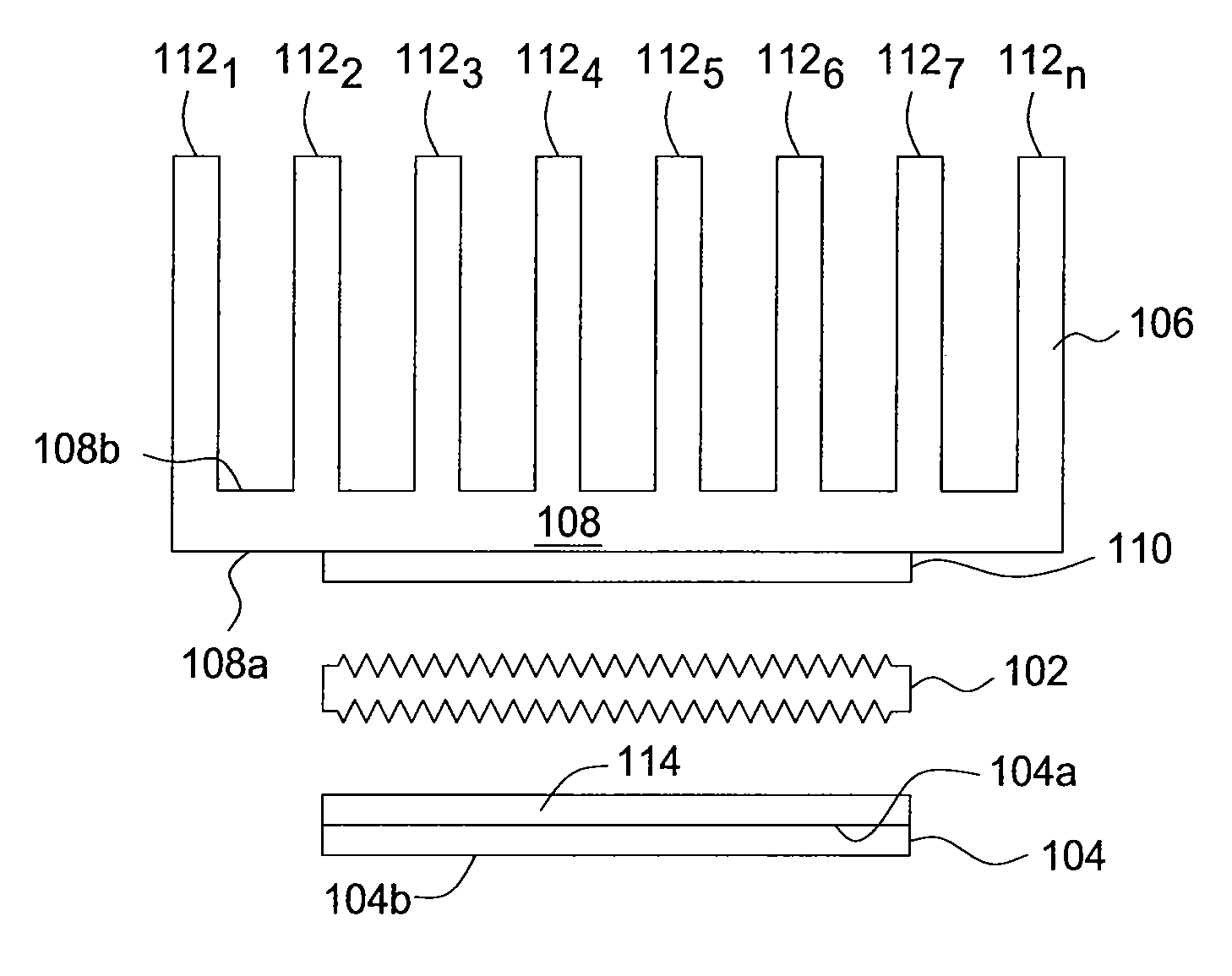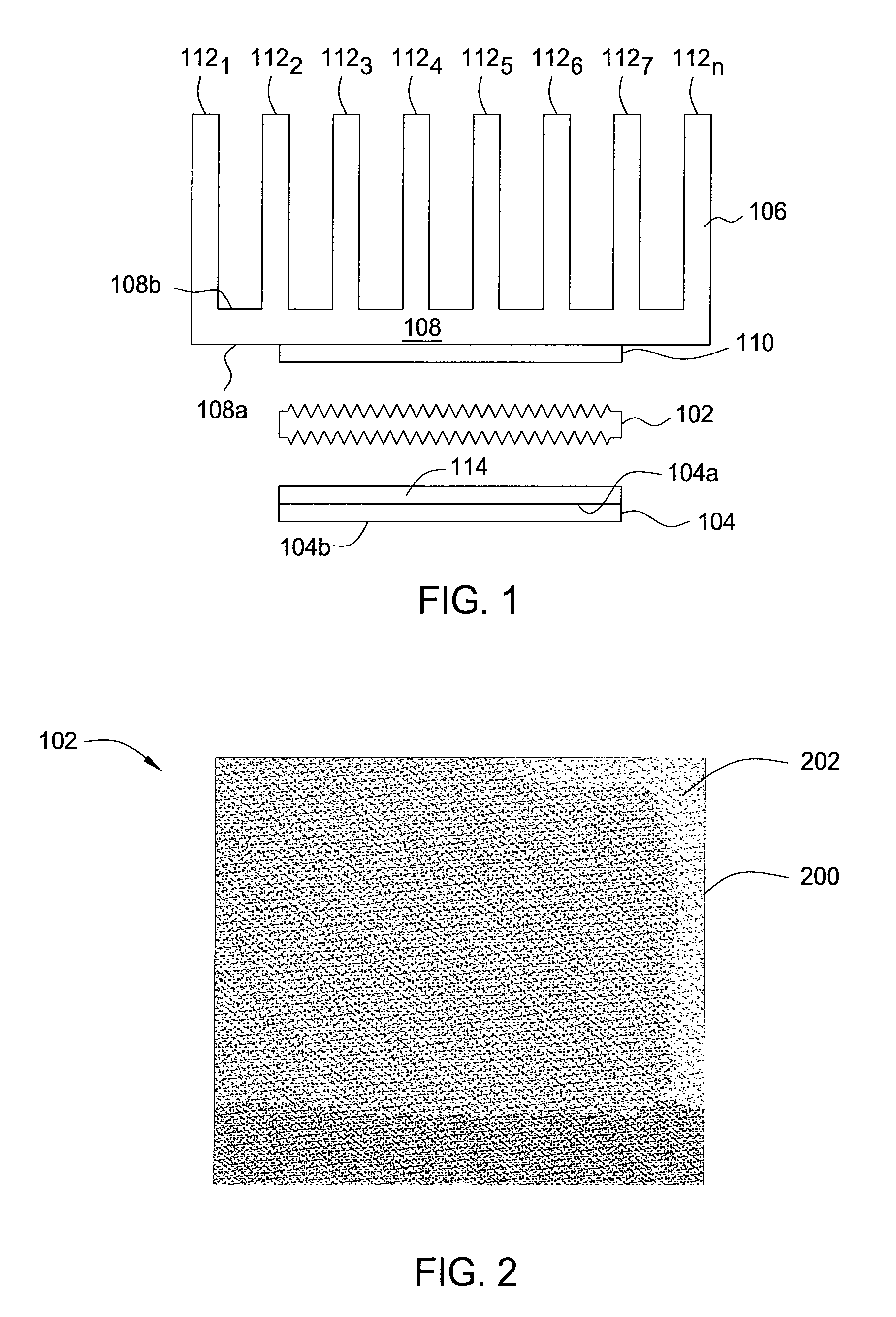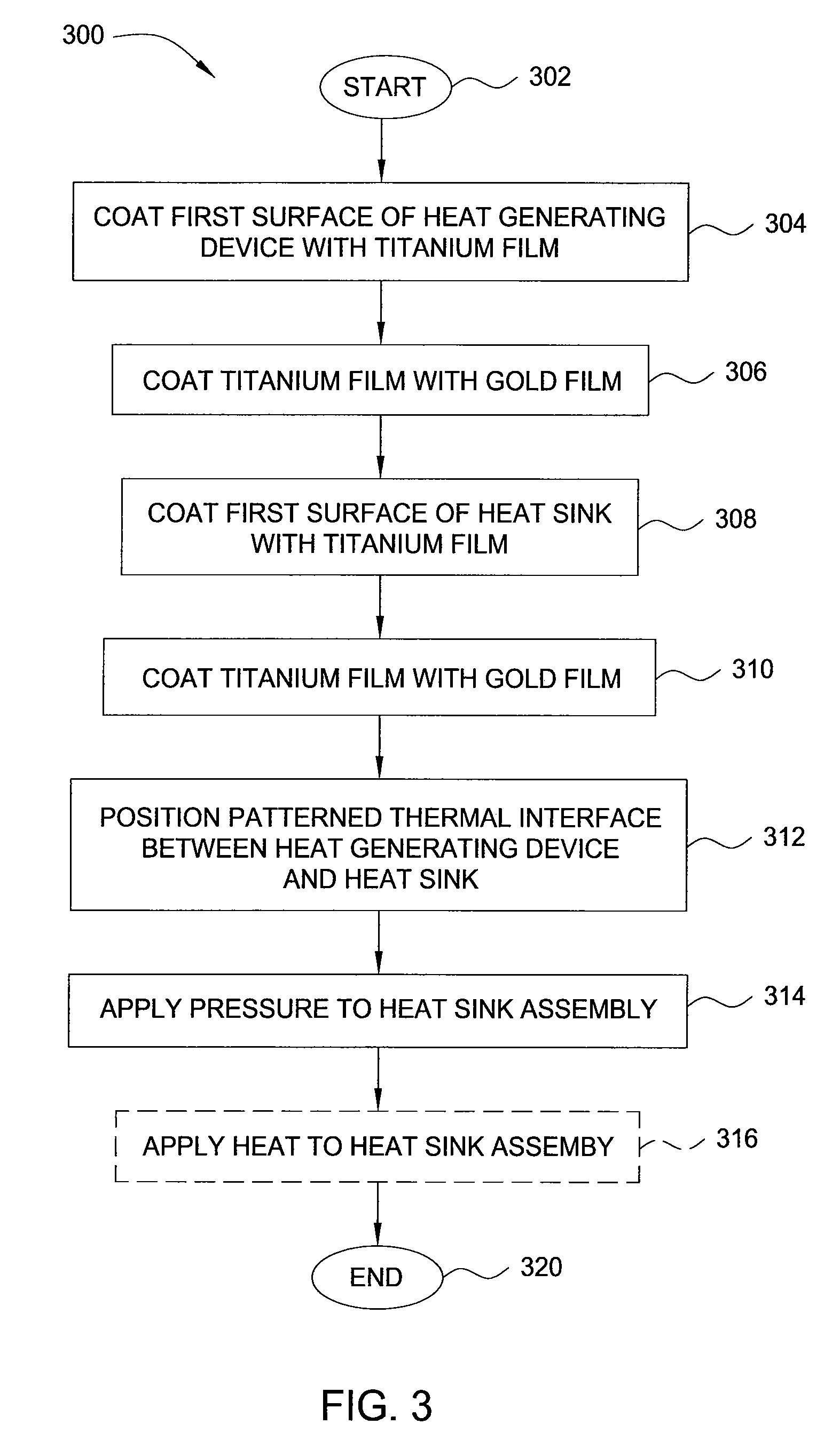Patterned metal thermal interface
a thermal interface and metal technology, applied in the direction of electrical apparatus construction details, basic electric elements, lighting and heating apparatus, etc., can solve the problems of material attack or diffuse into other materials, materials may fail to wet other materials, silicon, silicon, etc., and achieve the effect of convenient removal during rework and easy cleaning
- Summary
- Abstract
- Description
- Claims
- Application Information
AI Technical Summary
Benefits of technology
Problems solved by technology
Method used
Image
Examples
Embodiment Construction
[0023]In one embodiment, the present invention is a thermal interface for use in dissipating heat from heat-generating devices (e.g., microprocessor chips). Embodiments of the present invention provide improved heat transfer from a heat generating device to a heat sink, thereby allowing for better heat dissipation from the heat generating device. This ultimately results in better performance of the heat generating device, as heat-related failures are minimized.
[0024]FIG. 1 is an exploded view of a heat sink assembly 100 using a patterned metal thermal interface 102, according to one embodiment of the present invention. As illustrated, the heat sink assembly 100 comprises the thermal interface 102 disposed between a heat generating device 104 (e.g., a microprocessor chip or a lidded chip) and a heat sink 106. Alternatively, the heat sink 106 may be a lid where the heat generating device 104 is a microprocessor or semiconductor chip.
[0025]The heat sink 106 comprises a base 108 having ...
PUM
| Property | Measurement | Unit |
|---|---|---|
| temperature | aaaaa | aaaaa |
| temperature | aaaaa | aaaaa |
| temperature | aaaaa | aaaaa |
Abstract
Description
Claims
Application Information
 Login to View More
Login to View More - R&D
- Intellectual Property
- Life Sciences
- Materials
- Tech Scout
- Unparalleled Data Quality
- Higher Quality Content
- 60% Fewer Hallucinations
Browse by: Latest US Patents, China's latest patents, Technical Efficacy Thesaurus, Application Domain, Technology Topic, Popular Technical Reports.
© 2025 PatSnap. All rights reserved.Legal|Privacy policy|Modern Slavery Act Transparency Statement|Sitemap|About US| Contact US: help@patsnap.com



